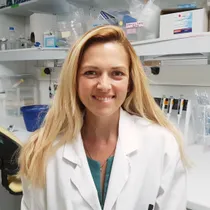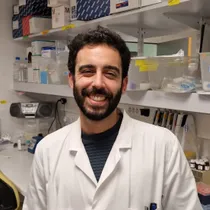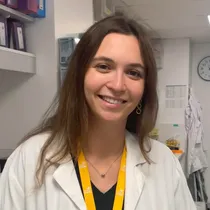Presentation

Our group studies in vivo T cell biology in mouse and human models.
We are focusing on three main topics:
1) Study of the mucosal associated invariant T (MAIT) cells: an evolutionarily conserved T cell selected by MHC-related protein I (MR1) on gut B cells. MAIT cells are the most abundant innate like T cells in humans where they represent 1-8 and 20-40 % of blood and liver T cells, respectively.
We have discovered a T cell sub population whose specificity is conserved between species characterized by the use of an invariant chain, the Vα7.2/19-Jα33 TCRα chain. These cells are localized in the gut lamina propria and require the presence of B cells in the same location both in humans and in mice. These T cells are called Mucosal associate invariant T cells (MAIT) and are selected by the MHC related molecule 1, MR1 which is also highly conserved between species.
We showed that MAIT cells development is a stepwise process with an intra-thymic MR1 dependent but B cell and commensal flora independent selection process followed by a peripheral maturation and expansion requiring B cells and the commensal flora.
MAIT cells are activated and secrete Interferon-g after stimulation by fibroblasts or antigne presenting cells co-cultured with bacteria and yeasts but not viruses. MAIT cells migrate to the site of bacterial infection both in humans and mice. They display protective function in 2 models of infectious disease. Expression of the multidrug-receptor transporter would explain the ability of MAIT cells to resist the xenobiotics secreted by bacteria while the capacity to secrete IL-17 would fit with their anti-bacterial activity.
We have developed a new mouse model harboring a high number of MAIT cells that are also fluorescent by introgressing both a wild mouse gene and a ror(gt) GFP transgene. This will allow us to study how MAIT cells are protective against specific infections.
2) Study of the interactions between tumors expressing nominal antigens in a constitutive or inducible way and specific T cells
Our goal is to better understand the relationship between tumors expressing a nominal antigen at a given time and location, and a minimal immune system specific for that same antigen. Using transplantable tumor models expressing antigen in an inducible manner or spontaneous tumor models expressing nominal antigens, we try to decipher whether the tumor is ignored or leads to deletion, anergy or class switch of the specific immune response or generate suppressor T cells.
The models have been implemented (Figure) and the immune response is being analyzed. These same models are used to develop new anti-cancer vaccines based on long peptide or DNA vaccination targeting the antigen to antigen presenting cells. Treatments associating vaccinations and chemotherapy are also tested.
3) Study of the immune response during the treatment of cancer patients.
We show that the CD4 T cells are aware of the tumor since the early stages since an increased number of CD4 T cells displaying signs of chronic activation are found in the blood of patients harboring small tumors. We are now analysing the specificity of these cells.




















